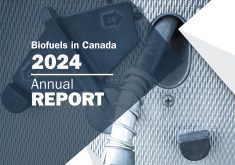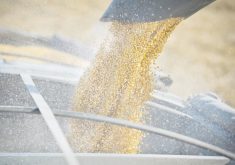U.S. Environmental Protection Agency says renewable jet fuel produced from canola oil cuts emissions by 59 to 67 percent
Sustainable aviation fuel is the best pathway for the airline industry to achieve net zero carbon emissions by 2050, according to a leading airplane manufacturer.
Net zero is the target that has been set by the International Air Transport Association.
Ryan Faucett, director of environmental sustainability at Boeing, said there are numerous ways to meet that lofty objective, but they all pale in comparison to the adoption of SAF.
Aviation is responsible for 2.5 percent of global carbon dioxide emissions, and that share will grow as the automobile sector increasingly embraces electric vehicles and more renewable energy is used for power generation.
Read Also

Growing crops for fuel comes with challenges
Crops for sustainable aviation fuel will be the subject of much debate. Where to plant them, will farmers invest in them and how food and fuel prices will be impacted must be discussed.
“That number could go as high as 10 to 15 percent even by 2030 as these other industries mitigate,” Faucett said during a recent presentation at the Advanced Bioeconomy Leadership Conference (ABLC) 2023.
The aviation industry needs to mitigate 954 megatonnes of annual carbon dioxide emissions generated by 30.7 million flights per year.
Boeing has developed a tool called the Cascade Model for determining the best way to achieve that goal.
The model shows that developing futuristic aircraft that run on hydrogen or electricity would decrease emissions by an estimated 1.1 percent by 2050.
Upgrading Boeing’s entire fleet to the most fuel-efficient planes would drop them by another 17 percent.
SAF is by far and away the most effective mitigation tool, reducing emissions by 55 percent.
“The answer is the same in every single scenario, we need a ton of SAF,” said Faucett.
The model helps Boeing advocate for SAF with policymakers and airline customers around the world and is a big reason why the company is investing in the fuel.
Earlier this year Boeing announced it is purchasing 21.2 million litres of the fuel so it can convert 20 to 25 percent of its internal operations to SAF.
“We’re real about this stuff,” said Faucett.
“We think it makes a difference, and we want to be part of leading that journey.”
The U.S. government is also on board.
The U.S. Department of Energy, U.S. Department of Transportation and the U.S. Department of Agriculture, in collaboration with the U.S. Environmental Protection Agency, recently unveiled their SAF Grand Challenge Roadmap.
The 128-page document outlines a government-wide approach to work with industry to achieve 11.36 billion litres of SAF production by 2030 and 132 billion litres by 2050, which would be enough volume to supply 100 percent of projected jet fuel use by that time.
The document states that the path to meeting the 2030 goals requires a focus on commercially ready feedstocks and conversion technologies.
“Lipid-based pathways (fats, oils and greases) are expected to be the primary fuel pathway leading up to 2030,” states the roadmap.
Chris Vervaet, executive director of the Canadian Oilseed Processors Association, said his organization supports the U.S. government’s ambitious SAF target.
“It’s more good news, another source of growing demand,” he said.
“It just continues to put wind in our sales as a canola industry.”
SAF is made from renewable diesel but requires a little more refining and processing. The SAF Grand Challenge requires fuels to reduce emissions by at least 50 percent compared to conventional jet fuel.
The EPA has conducted a lifecycle analysis showing that renewable jet fuel produced from canola oil reduces emissions by 59 to 67 percent, so it qualifies.
















